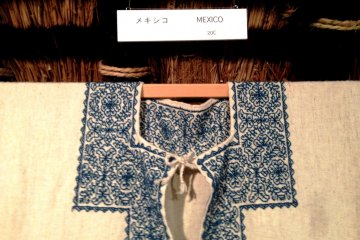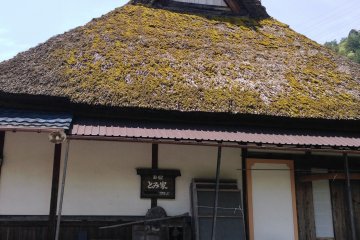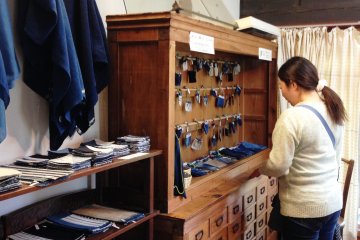It was only two centuries ago that villages like Miyama were locked away from the rest of the world.
People would live from the bounty of the land, and after a rich harvest would plant indigo, a blue flowering plant whose compost would nurture the soil, getting it ready for the following year. Also known as Indigofera tinctoria, this plant is better known for its blue pigment which is used to dye denim and other textiles. In the days of old, items like clothing were heirlooms to be passed to the next generation; in the same way that land or property would be today. It made the handmade kimonos and other traditional clothing all the more special.
Looking at the heirloom indigo garments here in the museum, it reminded me of a folk song called Asadoya Yunta:
You are the wild rose, blooming in the field;
You take a hold of me, going home at sundown.
Partly glad and partly ashamed am I, for an ill-fame you give rise to;
You are the white lily, far beyond my reach.
If you do weeding, do it on the full moon night,
for there’ll be you and I and no one else there’ll be.
I will dye for you, the blue wedding garment;
To tuck your sleeves, put on cords, of compassion as of me.
Until the modern era, blue was the preferred color for wedding dresses. Blue was the symbol for purity and piety in wedding dresses, until a young twenty year old princess called Victoria changed this forever with a white wedding dress in England in the nineteenth century.
For many city dwellers, the word museum may bring forth images of sterile white-washed walls and whisper quiet contemplation. Visiting the Little Indigo Museum on the other hand, is an opportunity to step into the rustic country cottage, and seeing first hand an authentic workshop with the chance to talk with the actual cloth makers. On the ground floor there are a number of vats which are used regularly to dye the textiles. Upstairs there is a potpourri of indigo dyed clothing on display from around the world, collected by the curator Hiroyuki Shindo from his travels in the late twentieth century across several continents. In some ways he is retracing the journey of indigo dying itself, from Ancient Egypt in 2000 BC, through its adoption as an handicraft in Europe, Central America and Asia. The plant known as ryukyu-ai weaves its way from Myanmar and then snaking along the coast to the Ryukyu Islands, known today as Okinawa. In the Japanese vocabulary, there are a dozen words to describe different tones of indigo. A cloth that was only dipped once in the dying vat is called kamenozoki, or "blue like the distant horizon", while one that has been dipped twenty eight times is called jokon tomekon, or midnight blue. In between are tones like asagi, or sky blue, as well as konjiro, or royal blue. The motifs on each cloth is just as special as the colors, ranging from bamboo leaves to Japanese wisteria, or fuji, to reflect their affinity with the changing seasons.
The museum was originally a village elder’s house from 1796, its high pitched roof with seven “saddles” testify to the importance of this building. The thatched roof which bears the brunt of the long snowy winters is replaced every thirty years, a way of ensuring the skills of thatching are passed to the next generation.












